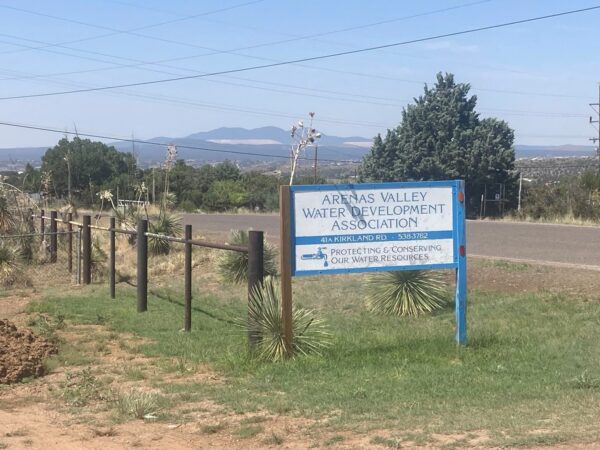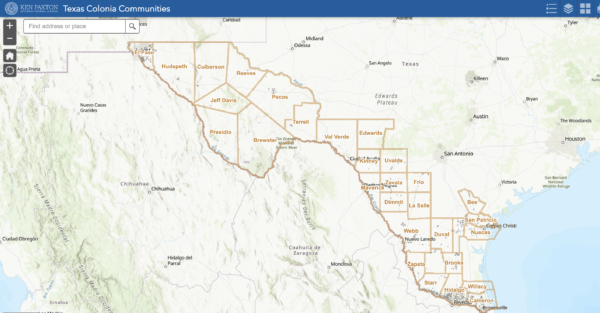
How a Revenue Analysis Can Ensure Water Security for Communities
Arenas Valley, or “Sandy Valley” as it might be loosely translated in English, lies along US 180 in Grant County, New Mexico. This stretch of towns —Hurley, Bayard, Santa Clara, Silver City— draws its lifeblood, in part, from the mixed red and green ores that abound nearby: copper. Traveling along this dry but scenic corridor, one is quickly reminded of something even more important: water.
The importance of water became clear during a visit to the Arenas Valley Water Development Association (AVWDA), which serves about 500 customers in one of the most rural portions of this corridor. During a recent visit, RCAC staff watched people come in to pay their bills and take the time to talk with Julie Dubiskas, AVWDA’s office manager since 2005. Between customers, she explained the importance of water, the many improvements made to the water system and the wonderful people she has worked with over the years.
Dubiskas also pointed out the challenges the water system faces: aging meters, distribution line breaks, and the loss of board members. Arenas Valley pulls all its water through an 8-inch transmission line from the Town of Silver City, located several miles away.
“One of the biggest challenges is paying for the water we purchase,” Dubiskas said. “As a purchased water system, we have less control over our costs. When Silver City increases its rates, we have to pass those costs along.”
Recognizing these challenges, the association reached out to Karl Pennock, a Small Utility Consultant with the Rural Community Assistance Corporation (RCAC), in June 2024. Following an initial kick-off call, RCAC began working with the Association to review its revenue needs. They identified approximately $6M in water system improvements over the next several years, including the extension and replacement of waterlines and meters.
The current revenue analysis aims to ensure that the Association has the capacity to meet its forecasted operating, debt service, and reserve needs over the next five years. A combined revenue/rate analysis review was completed in October 2024 with a presentation to the board conducted on October 23, 2024 with RCAC’s assistance. At the Association’s request, RCAC plans to provide further assistance, including a rate analysis that will optimize operating revenue while recognizing the Association’s water conservation efforts. The association continues to make progress on two key projects that will reduce chronic water loss: 1) replacement of deteriorated waterlines on the east and west legs of Arenas Valley Rd. along U.S. Hwy 180 with bid opening occurring today; and 2) installation of new radio-read water meters and related billing software.
By reaching out to residents and other communities along the mining corridor, the rate analysis will streamline access to funding. The proposed infrastructure improvements will ensure greater water security as the system considers becoming part of a larger regional waterline planned for the area. RCAC is proud to support the Arenas Valley Water Development Association as it looks to the future.
This article is funded by USDA under RCAP’s Colonias 2023-2024 grant.

Colonias in Texas: Improving the Quality of Life One Flush At a Time
Colonias are defined as a geographic area located within 150 miles of the Texas-Mexico border that has a majority population composed of individuals and families of low and very low income (taken from https://www.hudexchange.info/programs/cdbg-colonias/colonias-history/). While Colonias in Texas may have an unfortunate negative connotation due to their residents’ poor quality of life along the border for many years, the term “colonia” is not a negative term in Mexico. It is simply the term for an area or neighborhood in which they live.
Some families living in the Texas Colonias lack safe housing and essential services such as potable water, adequate sewage systems, drainage, utilities, and paved roads. Living conditions are often compared to underdeveloped countries. Colonias present one of the most critical housing needs in Texas, because many of the houses in the colonias were constructed mainly of scarce materials. Professional builders were rarely used, and residents frequently started with makeshift structures of wood or other materials. As finances allowed, they continued to improve their homes.
Resources from local, state, and federal agencies have positively impacted colonias in areas such as Hidalgo County, Texas. Thanks to many legislative updates and progressive actions of local leaders, Hidalgo County has eliminated the lack of adequate potable water in the colonias and has begun focusing on a better quality of life, including economic and social development.
One of the many positive programs currently helping improve the quality of life in colonias is placing streetlights within the community. Section 280.003 of the Texas Transportation Code allows for the placement of streetlights along a county road in a subdivision located in an unincorporated area in any territory within 150 miles of the US-Mexico border. Hidalgo County can require this basic service via their Model Subdivision Rules. Colonia residents are benefiting from a simple but effective solution for crime deterrence.
In 2018, North Alamo Water Supply Corporation began providing first-time wastewater for colonias north of Donna, TX as part of a multi-phase project, it became the first regional wastewater plant. Geographically, colonias have usually been north of Expressway 83 as communities were first developed south of this highway. As years progressed, cities could not cover the expenses to build or bore a wastewater line under the expressway. Thanks to funding from the US Department of Agriculture, Rural Development (USDA, RD), Texas Water Development Board (TWDB), and the North American Development Bank (NADBank), North Alamo Water Supply was able to complete a $14.9-million-dollar project and provide services to 400 homes. Additionally, this project allowed Donna Independent School District to build a state-of-the-art high school, Donna North High School, in the center of all the colonias. Donna North High School has proven to greatly benefit the next generation of students, as they now have an educational resource that was once deemed impossible. The completion of this first-time wastewater collection system has allowed businesses to open in colonias, improving economic development that has been lacking for decades.
Colonia residents and its leaders would agree that there is still plenty of work. Still, much has been accomplished, and the quality of life has drastically improved. History has taught that the resiliency of colonia residents will continue to “flush-away” any issues they may continue to face.